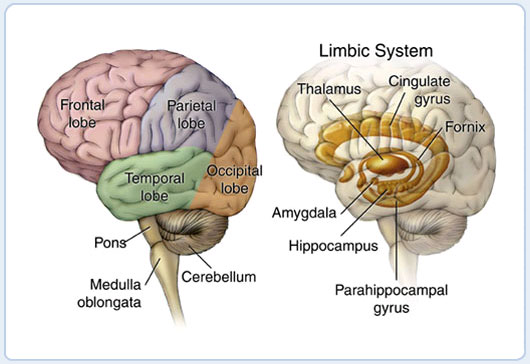Evidence for a belief in God or gods emerged in the human species around the time of the Neanderthals but is most convincingly found within Homo sapiens art and culture.
"There probably is a God. Many things are easier to explain if there is than if there isn't." —John Von Neumann: The Scientific Genius Who Pioneered the Modern Computer, Game Theory, Nuclear Deterrence and Much More, Norman Macrae, p. 379
In recent times, many atheist or agnostic scientists have reduced religious belief to the status of a reassuring fairy tale. A good example is Richard Dawkins who called such a belief the “God delusion” and authored a book with that title.
Modern neurobiological investigations suggest an alternative interpretation.
After years of using SPECT technology to track the brain activity of two groups—Tibetan monks and Franciscan nuns—Dr. Andrew Newberg and Dr. Eugene D’Aquili revealed their findings in Why God Won’t Go Away: Brain Science and the Biology of Belief.
To explain the evidence and conclusions in their book, the authors present a brief summary of the evolution of the human brain and offer a primer on brain architecture and cognitive function.
The Evolution of the Human Brain
The basic unit of all nervous systems is the neuron. Whether you are a flatworm or a human, the same neurochemical reactions in this cell and similar basic structures are used to receive sensitive information from the external world.
In evolutionary terms, these senses developed to take in a variety of stimuli—visual, auditory, touch, smell, and taste—which get integrated into “some useful rendition of reality.” In this way, an organism develops responsive behaviors which are meant to enhance its chance of survival.
According to the authors, in the development of the advanced human brain, networks of neurons evolved into specialized structures which then became connected with ever more elaborate circuits. The functional and amazing result of this neural architecture is a rich and seamless experience of the external world. But the mind is not restricted only to external stimuli, but perceives internal ones as well:
“All the things the mind perceives—all thoughts, feelings, hunches, memories, insights, desires, and revelations—have been assembled piece by piece by the processing powers of the brain from the swirl of neural blips, sensory perceptions, and scattered cognitions dwelling in its structures and neural pathways.” —John Von Neumann: The Scientific Genius Who Pioneered the Modern Computer, Game Theory, Nuclear Deterrence and Much More, Norman Macrae, p.15
Brain vs. Mind
 Gross anatomy of the brain. Left panel shows the major lobes of the outer neocortex layer of the brain, and right panel shows some of the major brain areas internal to the neocortex / via med.libretexts.org
Gross anatomy of the brain. Left panel shows the major lobes of the outer neocortex layer of the brain, and right panel shows some of the major brain areas internal to the neocortex / via med.libretexts.org
These perceptions of inner stimuli are a minor matter, however, compared to a rather remarkable development. The human brain began to perceive its own existence and began to “reflect as if from a distance” on its own perceptions. This “free-standing observant self” gave birth to the phenomenon known as “mind.” This phenomenon reflects the age-old question posed by philosophers and scientists: How does material stuff—the biological flesh and blood of a human brain—suddenly become aware?
Both brain and mind are involved in an incredible interplay of neural processes:
“(T)he brain is a collection of physical structures that gather and process sensory, cognitive, and emotional data; the mind is the phenomenon of thoughts, memories, and emotions that arise from the perceptual processes of the brain.” —John Von Neumann: The Scientific Genius Who Pioneered the Modern Computer, Game Theory, Nuclear Deterrence and Much More, Norman Macrae, p. 33
In other words, evolution has produced a brain capable of creating the most vivid perceptions possible without which the mind—the self-aware observant self—would not exist. They appear to be, in fact, two aspects of the same entity.
Brain Architecture and Cognitive “Operators”
The neocortex is the part of the human brain most associated with being human and is the most recently developed structure in our brains. It distinguishes us from all other animals in several ways, but one humorous remark sums up human uniqueness this way:
“Name another entity in the cosmos which tries to prove that it is not unique.” —Lost in the Cosmos: The Last Self-Help Book, Walker Percy
Within the neocortex are several association areas that “work on” the vast amount of sense data entering the brain, and various structures that regulate our responses to this data dump. The authors identify eight functions or “cognitive operators” that are not structures but are the collective functions of various structures and networks in the brain.



